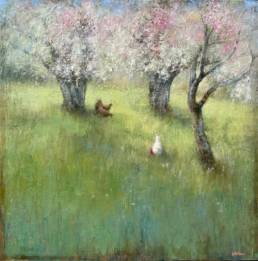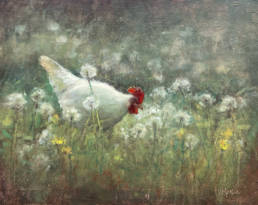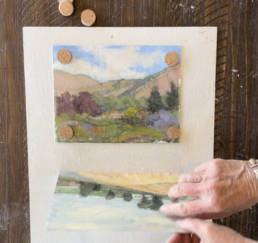Now more than ever, artists and other creative entrepreneurs are concerned about how to make more money.
We can use these strange days of social distancing and self-quarantine to educate ourselves, hone our skills, and sharpen our ways in which to make more money. The good news is artists, photographers and other creatives are resilient.
So, how do YOU make money as an artist?
Right now, many seasoned artists are asking themselves this very question. We all know we must SELL our products. This article is filled with creative ways in which you can sell your art, skills, and creative products.
Here are my Top 15 Ways Artists & Creative Entrepreneurs Can Make More Money. Each idea has a short description and a link to an article full of expert advice.
In the coming months we will be discussing these ideas in more detail.
1. Online
Nowadays more than ever, artists of all kinds are selling their work online.
Selling your product online is a great way for artists to make money. You can sell directly from your own website, or on many of the social media platforms like Instagram and Facebook.
2. Print on Demand
There are many online websites and ‘print on demand’ sites like Fine Art America and Zazzle which allow you to upload images of your art for free or a premium price. You can customize your profile and sell your art in various forms from giclee prints to t-shirts and coffee mugs. The sites will require some type of commission, because that’s how they make their money.
Any commission from an online website would be determined by the terms of use contract that you agreed to. Different sites charge a different percentage of a commission. Anywhere between 1-5% is normal; 10% is on the high end.
Here are some more POD sites to consider https://www.shopify.com/blog/print-on-demand-companies
3. Out of Studio
Many artists sell their work out of their studio by private appointment, set business hours, or open studios arranged with other artists. If you are represented by a gallery, that agreement may extend to “studio sales” or all sales of your work.
If you do not have a formal relationship with a gallery or a rep, you obviously retain 100% of the sale.
4. Teaching / Guest Artist Programs
One of the most popular ways to make money as an artist is to teach. Many artists including myself, teach workshops locally, internationally, in person or online.
Online teaching is on the rise! Platforms such as Zoom, GoToMeeting, Facebook Live, Meet, and Twitch are easy ways to get your message out to a large or intimate audience.
Teaching opportunities at a college level are competitive, but don’t overlook guest artist programs schools and universities. There may be unique ways to get a teaching job of which you may not have thought!
5. Art Commissions
Private Commissions: Artists will do work on a commission basis to make money. For instance, if collectors want a personalized work of art like a portrait, they will commission an artist. The artist sets the price and usually asks for a percentage of the price up front.
Are you a gallery represented artist? The gallery will likely take a cut of any commissioned work that they bring to you. If the client found you online, you must weigh those ethical decisions yourself. Be sure and refer to your terms of commissions in your gallery contract and respect your art gallery relationship.
Public Commissions: Artists are commissioned for public art usually in connection with a new building or construction project. Many states have a law that specifies that at least 1% of the total building cost go to art for the building. Usually state and city art groups have the latest information of what program is currently accepting applications.
There are also private funds for public art like The Public Art Fund and Percent for Art. When artists get a public work commission, they typically get 20% of the total cost of the project as an artist’s fee.
6. Commercial Galleries
Commercial galleries typically sell artists’ works and receive a commission. The typical commission that galleries take is 50% of the sale of the work. You can negotiate that commission with your gallery director or owner. This is determined by the contract.
Whether you submit your work for sale, by consignment, or enter into an ongoing relationship with a gallery, the parameters should all be written down in a contract.
7. Nonprofit Galleries
Nonprofit galleries typically show work that is young, edgier, and cutting edge. Depending on the gallery, they will take a commission – usually not more than 30%. Nonprofit galleries typically do not “represent” artists or enter into contractual relationships with them.
8. Co-Op Galleries
A co-op gallery usually involves a group of artists who work together to show their work, promote the gallery, and sometimes offer community art classes or workshops. Some will even have studio space available for their members to create artwork on site.
9. Grants
There are many grants for artists. They are very competitive to get, but as one mentor of mine advised me, “Don’t give up until you have applied ten times.” Grants vary in how much money they award. Some grants are privately funded and some are publicly funded. Some are given for a specific project that you propose and some are given outright for the work that you do.
10. Residencies
There are many residencies for artist to get “away from the world” and focus on their work. The length of the residency varies and the amount of money granted to the artist varies too. Some residencies actually charge money. But many will cover at least some if not all costs. You must apply for these residencies and have a flexible work schedule to go.
Many times the most valuable asset of a residency is not the money granted, but the professional network an artist forms while there. The network may include other artists, guests, curators, and other influential people in the art word.
11. Museums and Art Centers
Artists generally don’t see a cent from exhibits in a museum. In some cases, however, they do make money.
Installation artists are typically given an artist fee for creating a temporary installation. The fee can be set by you or the museum. Find other ways that museums can help an artist’s career and hear what a curator has to say about the business of museums.
12. Hospitals & Medical Centers
Art is Good Medicine! For years, hospitals have understood that art significantly improves the mood and well-being of their patients.
Hospitals, medical centers and doctor offices receive more foot traffic than most galleries! Many hospitals have revolving art and photographic exhibitions. They are a great place to sell art, photography, handmade crafts, and sculptures.
According to the Arts and Health Alliance, 56% of all hospitals, hospices and nursing centers use parts of their operating budgets to buy paintings and sculptures.
Over the years, I have sold my paintings in our local hospital!
13. Ambassador Programs
Another unique way to monetize your efforts and offset art supply costs is by becoming a Brand Ambassador. Many art companies have added brand ambassadors to help increase their own brand awareness. In return, these companies will compensate their Ambassadors with art supplies, affiliate programs and at times travel expenses.
Ambassador programs are quite exclusive, a generally require a high level of artistic competence and a strong online presence.
14. Affiliate Programs
If you blog about arts and crafts you can make some extra money by joining an Art Affiliate Program. This way, you can easily earn a commission when you make a sale on your site. You might prefer to join a program like Amazon or you may prefer a smaller affiliate program such as Blick Art Materials, or Jerry’s Artarama.
Here’s a helpful article with 50 niche specific affiliate programs to help you make more money.
15. Restaurants, Banks, Design Centers, Clothing Stores & More!
Restaurants are another great place to sell your art, photographs or fine crafts. Banks are filled with people and money! Many banks will be willing to display art for sale.
Many years ago, I got my first art gallery break from showing my art in an upscale clothing store! A neighboring art gallery saw my paintings hanging in the store and offered to represent me. It was my big break!
In Conclusion
I hope this article helps you come up with some fresh ideas for selling your art, craft, or product. How do YOU sell your artwork? Please share your thoughts!









